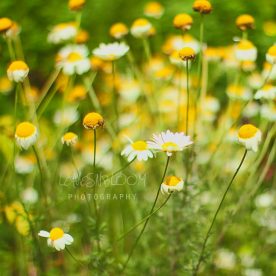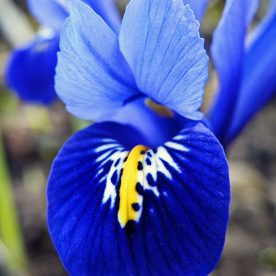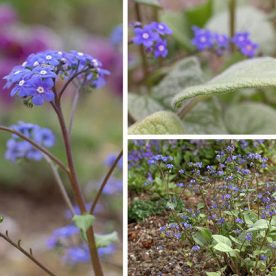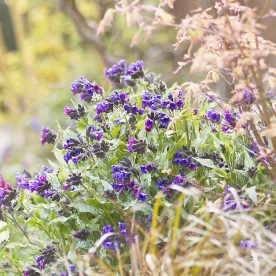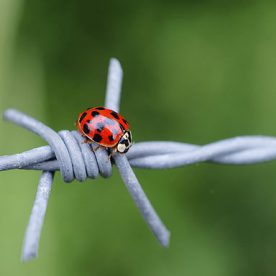Growing Pulmonaria in Scotland is easy! They will grow in sun or shade. As ground cover or beneath trees and shrubs. Just as long as the soil isn’t too dry. In fact, they are unfussy plants and will even grow in difficult places!
This post may contain affiliate links, which means I may receive a commission if you click a link and purchase something that I have recommended. As an Amazon Associate, I earn from qualifying purchases. Please check out my disclosure policy for more details.
They are favourite cottage garden plants as they are so easy to care for, very forgiving and very adaptable.
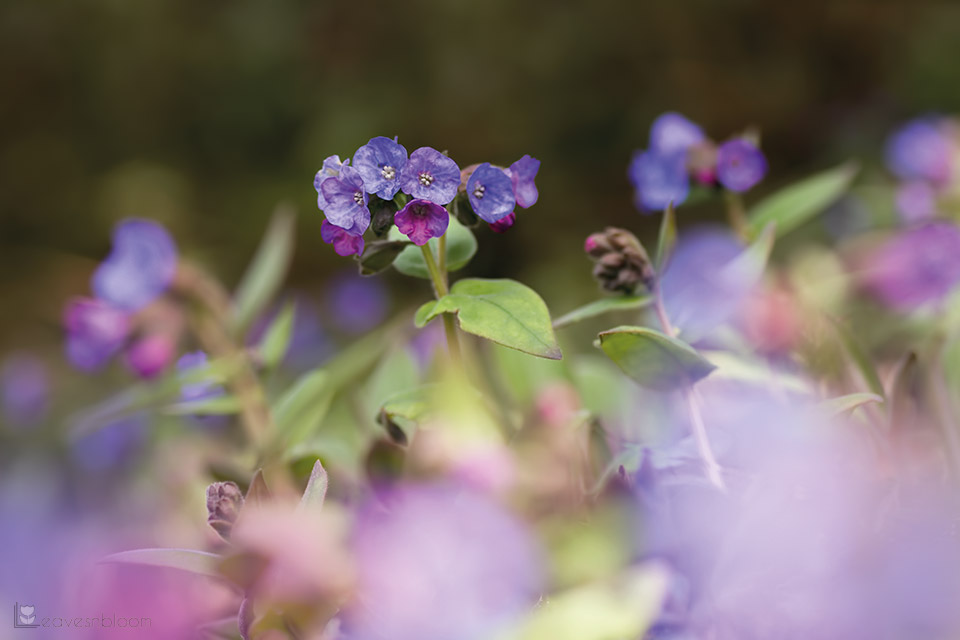
Growing Pulmonaria
Great Plants For Small Spaces Too!
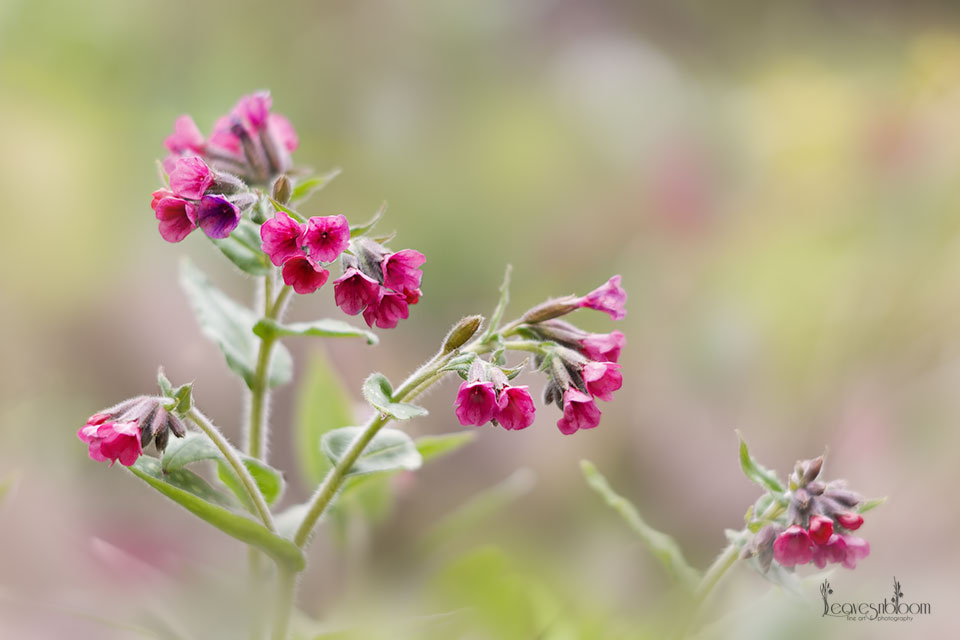
Among my other spring-flowering plants is Pulmonaria Raspberry Splash. It’s very vigorous and makes a large clump within a few years. At this time of year, it’s bursting with pink blooms!
If you want a welcome sight in the garden …especially after a bleak winter season then Pulmonaria (Lungwort) is a great plant choice. Furthermore, it’s an all-time cottage garden favourite. Moreover growing pulmonaria is so easy … especially if you are encouraging your children or grandchildren to start gardening and develop an interest in wildlife.
They reliably come back year after year and are one of the earliest perennials to start flowering. The plant has lots of bell-shaped flowers and is clump-forming with good foliage. The rough and hairy leaves can be spotted, blotched, silver or plain green depending on the variety. The foliage remains attractive in the garden throughout the spring, summer and well into late autumn.
Growing Pulmonaria
Pulmonaria make good front of the border plants and look great with spring bulbs. For example plant them among hostas, ferns, dark leafed heuchera, euphorbia, bergenia and brunnera for good foliage contrasts. Growing pulmonaria plants close together act like a weed-suppressing ground-cover. Furthermore, you can use them in those shaded parts of the garden to brighten a dull corner.
They form dense tufts of foliage, generally handsomely blotched and speckled with white, and make pretty groups in the spring garden, or in semi-wild spaces but are worthy of the best places in the flower garden ~ William Robinson … probably one of the most controversial garden writers of his era!
Pulmonaria Flowers
The flowers are heterostylous meaning that they have two types of flower on each species. The Pin flowers (long-styled with short stamens) and the Thrum flowers (short-styled and long stamens).
Because of their long funnel-shaped flowers they are a great nectar and pollen source for some wildlife species like bumblebees. In particular the hungry and drowsy queen bumblebees that have just woken up from their winter hibernation. They have tongues long enough to reach the nectar treasure at the base of the funnel. Shorter tongued bees might resort to ‘Nectar Robbery’ as they pierce holes in the lower part of the flower funnel to steal the nectar.
A good nectar source for drowsy and hungry queen bumblebees!
Moreover, it’s not only bees that adore these flowers! Bee-flies (Bombylius major) with their long proboscis can reach down into the flower. It’s the same with snout flies (Rhingia campestris) too. See my post on the Bee-fly – Bombylius major which shows one drinking nectar from pulmonaria flowers.
Many of the Lungwort flowers change colour with age from pink/violet to blue. The young pinkish flowers have significantly greater pollen and nectar rewards than the older blue ones.
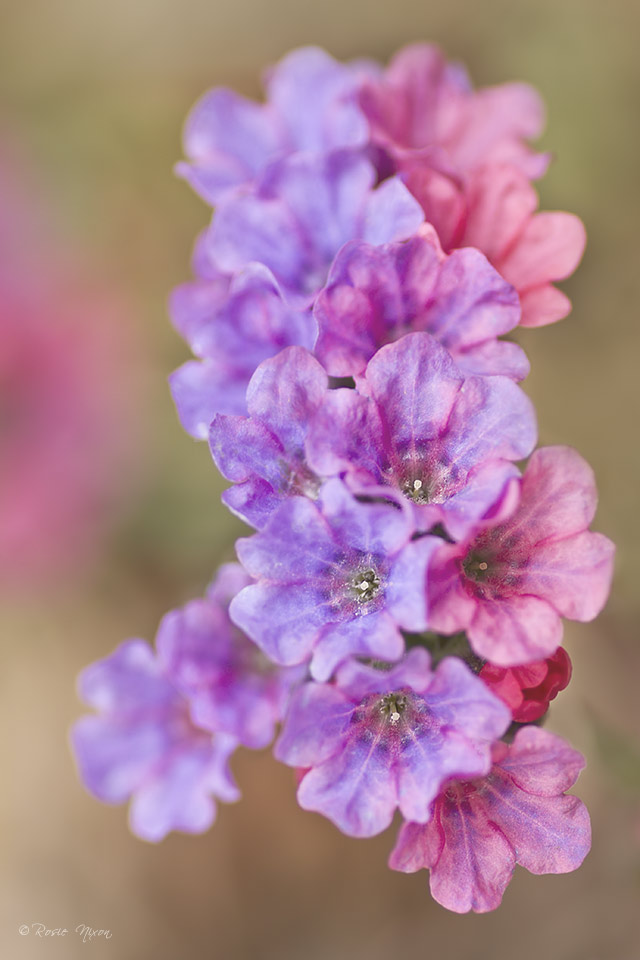
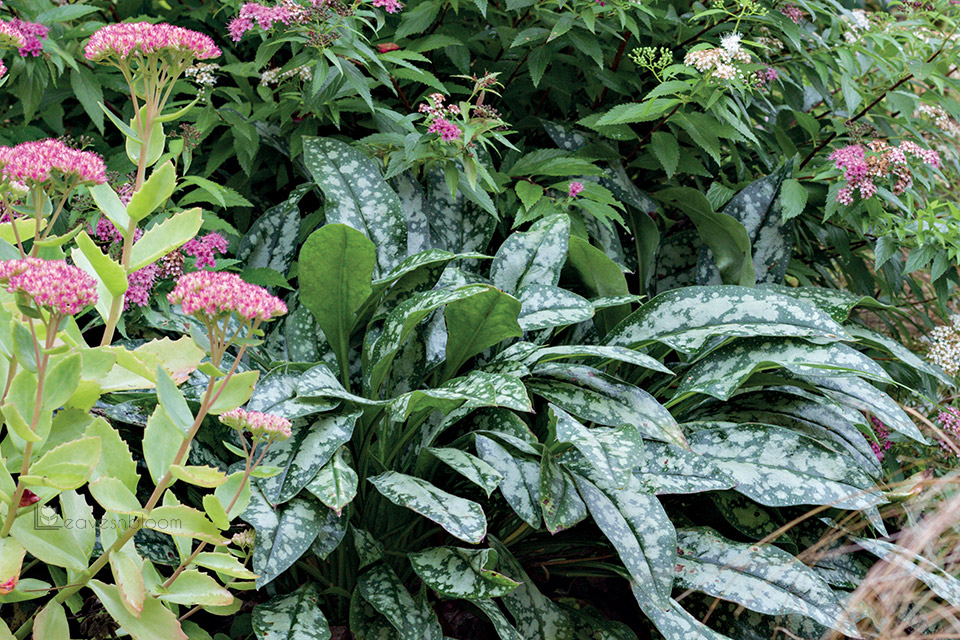
Growing Pulmonaria – What’s in a name?
pul-mo-NAIR-ee-a
Pulmonaria is derived from ‘pulmonarius’ which means ‘of the lungs’ in Latin. Hence the common name Lungwort – ‘wort’
simply means ‘plant’. Back in history, there was an ancient theory called ‘The Doctrine of Signatures’. It was believed that just as God created disease, He also gave man cures hidden in nature. The philosophy behind the theory was that if a plant looked like a body part, it might be a clue that it was good for healing that part. Since the Pulmonaria leaves had spotted oval-shaped leaves people felt that they resembled a diseased lung. In medieval times the plant was believed to contain virtues which could cure lung diseases such as tuberculosis, asthma and coughs.
Foliage Types
This is a high key photograph of some of the leaves in March 2017. Later in the season, the leaves will have grown much larger. While in many cases the silver pigmentation will become much more pronounced.
- A P. Opal new spring leaves
- B P. rubra overwintering leaves
- C P. Diana Clare new spring leaves which will lighten to silver
- D P. Blue Ensign new spring leaves which stay green
- E P. Raspberry Splash new spring leaves
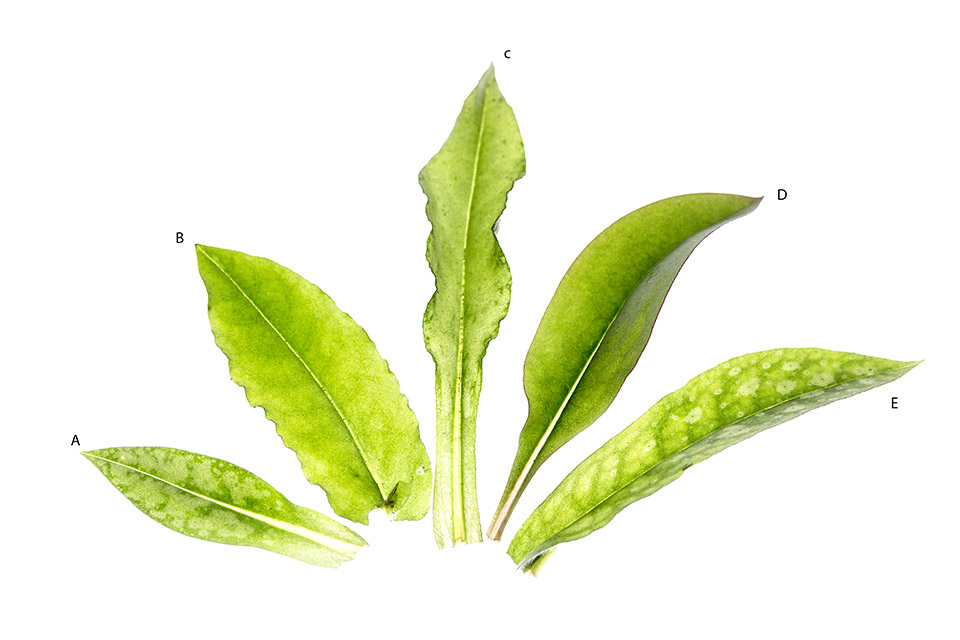
Growing Pulmonaria in my garden
Here in the leavesnbloom garden I grow eight different varieties. The first to flower is Pulmonaria rubra and sometimes it’s in flower from December right through to late spring. It’s not as showy as others as it has large rough plain green leaves that remain all winter. It grows towards the back of the borders.
Can be in flower from December onwards!
Consequently, I can enjoy its flowers before the shrubs, grasses and other perennials leaf up to fill the foreground. It also grows well in damp shady places. Once it has finished flowering I cut back all the untidy leaves with shears to encourage fresh new ones. The leaves are not so easy to pull away by hand … even if you wear gloves.
One of the most vigorous with long-lasting foliage is Pulmonaria Diana Clare AGM. It has large silver lance-shaped leaves and violet and blue flowers. The plant looks just as a good as a hosta … with one huge advantage – it’s slug proof!
Slug proof!
Once finished flowering cut the whole plant back. Then give it a feed to encourage new fresh growth. As a result, it should last throughout summer and autumn as a good foliage plant.
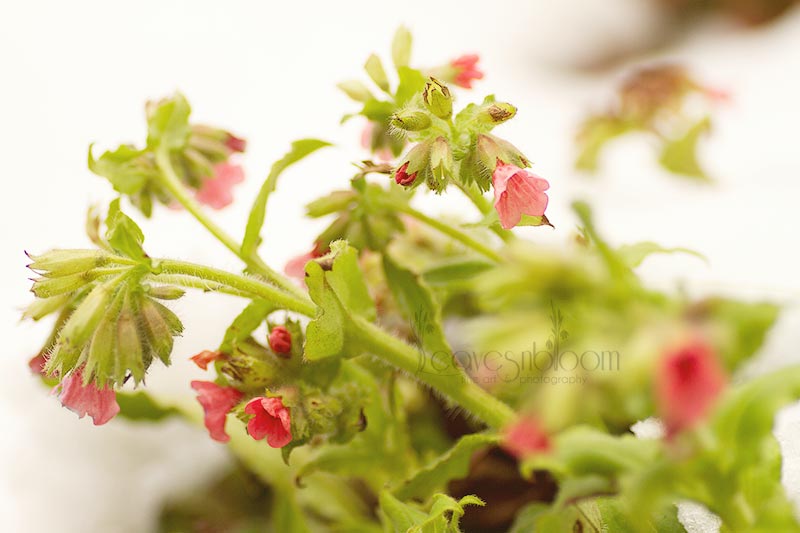
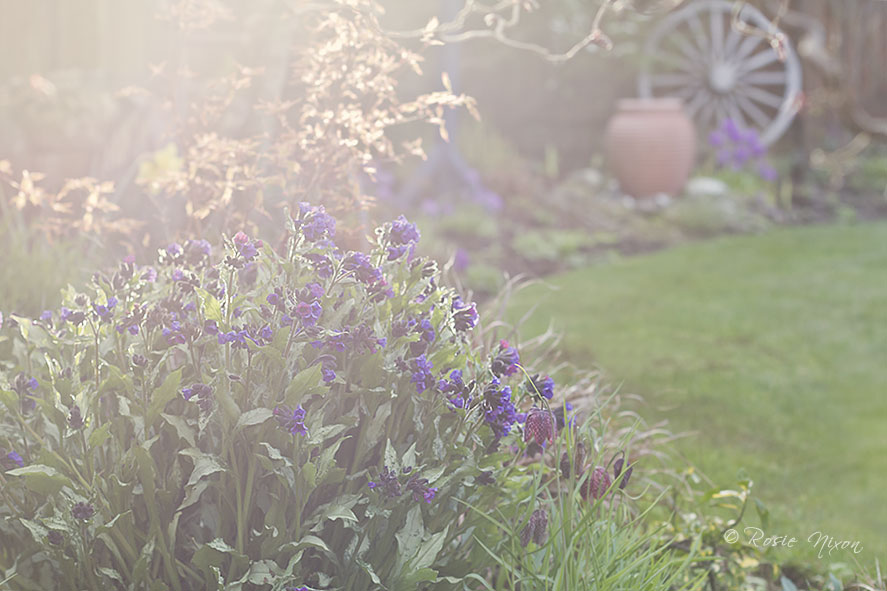
I’m growing Pulmonaria longifolia Diana Clare AGM (affiliate link) in a difficult wet and mostly shady north-facing part of the garden.
Others I grow that don’t need cutting back after they finish flowering are:
- P. Bertram Anderson – vigorous long narrow silvery leaves with dark violet-blue flowers.
- P. Blue Ensign AGM (affiliate link) – dark green non spotted leaves and clusters of deep blue flowers. The plant goes dormant during the summer months and the leaves die away naturally.
- P. Raspberry Splash – mounds of upright silver spotted leaves with raspberry pink flowers.
- P. Mrs Moon – pure blue flowers open from pink buds above a neatly rounded mound of spotted leaves.
- P. Opal – vigorous mounds of silver-spotted leaves, pink buds open to light blue flowers.
- P. officinalis – this is one of the old cottage garden cultivars that starts to flower from early February to June. It has pale pink and blue flowers with silver spotted leaves. As a matter of fact, wildlife prefer this plant to all the other cultivars in my garden. However, the plant is very susceptible to mildew during the summer months.
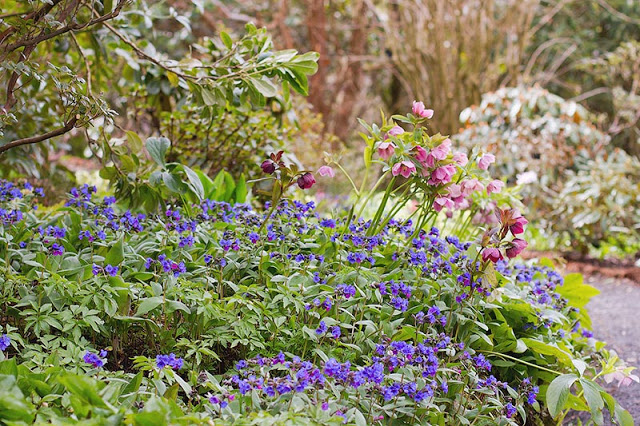
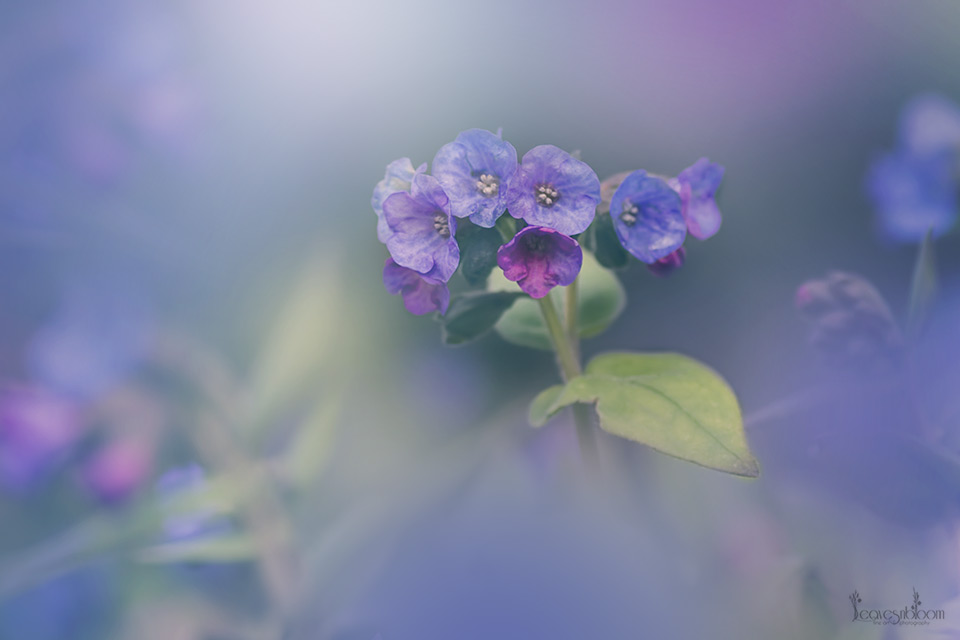
How to care for Pulmonaria plants
The plants are very easy to grow with a long season of interest. In fact, they require virtually no special attention as long as you keep to the care instructions below:
- Soil Requirements
Any reasonable garden soil that is not too dry. Mulch after planting to keep moisture around the roots and add well-rotted compost to drier lighter soils.
- Hardiness
Hardy to -20°C / RHS rating – H6
- Pests and Diseases
Usually slug, rabbit and deer resistant but susceptible to powdery mildew if dry at the roots. If you keep getting mildew every year it’s a sign that you need to replant in moister soil. Cut off any mildew leaves and don’t put them in your compost heap as the spores will spread.
- Height
30 cm/12 in high. Clumps can spread up to 90 cm/ 3 ft with some of the more vigorous varieties.
- Light
Sun or part-shade as long as it’s not too dry a position. They won’t thrive in sun-baked dry soil.
- Yearly Maintenance
Remove faded flowers if you don’t want the plant to self- seed. Seedlings won’t be the same as the parent plant as they freely interbreed. Water after planting and if plants are showing signs of stress during a warm summer. Divide the clumps every 3-4 years in late summer/autumn. If grown in containers mix some slow-release fertilizer into the top of the compost each spring.


